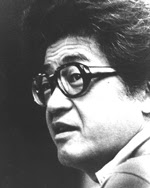The Dutch writer Marcellus Emants (1848-1923) belonged to the group of writers who came up in the eighties of the 19th c. and who modernized Dutch literature - for the first 80 years of the century, Dutch literature (and for that matter, all of society) had been in the deadening, small-minded grip of pastors, preachers and grocers. That changed in the 1880s, when Holland also underwent a rather belated industrial revolution.
Many of the new authors were influenced by naturalism (Zola); Emants also admired Turgenev, but A Posthumous Confession has in the first place been influenced by Dostoevsky's Notes from the Underground (1864). It is also very much a fin de siècle novel, encased in a suffocating web of guilt and fear.
The plot is simple. When the novel opens, a man of independent means called Termeer has just murdered his wife. The novel is his confession of how this came about. Termeer is a despicable man, full of self-loathing. He is pathologically introverted, indolent and unable to take any action, uninterested in society, and without a shred of empathy for his fellow humans.
He feels that everything in his life has gone wrong: he had a terrible childhood, as he was treated as an outsider by other children; after he grew up, he became very much interested in women, but was to shy to approach them, so he had to satisfy his urge with prostitutes. After a particularly wild period, he decides to straighten out his life by marrying. He knows no suitable partner, but notices that the man who has been his former guardian has an unmarried daughter. This daughter accepts him, as he is the first to propose to her and she is already thirty - in the 19th c. women were expected to marry.
Although they spend a few quiet years together, the loveless marriage is unhappy, especially after the death of a girl baby (Termeer is relieved as he hates children). Termeer seeks his pleasure outside the house, he becomes infatuated with a dancing girl and needs money for her upkeep. His wife in her turn becomes close friends with their neighbor, a former pastor with a sickly little daughter. They have many soulful talks, making Termeer madly jealous. He wants to separate and marry the dancing girl, but his wife rejects this - she will do her duty to him, she says.
Termeer works himself into a mad frenzy - when he happens to notice that in her nervous state his wife has had recourse to a sleeping potion, he pours another bottle of the stuff down her throat. The coroner decides it is inadvertent death by an overdose of the potion. Here the story ends, but... it is a "posthumous" confession, so what happened to him? Did guilt after all overtake him, or was he jilted by his dancing girl and did he kill himself out of spite?
A Posthumous Confession reminded me somewhat of the early stories of Arthur Schnitzel, where we find the same type of introspection brought about by new notions of psychology. It is a pessimistic story, as were most novels by Emants; he also wrote interesting travelogues.
The Dutch version of the novel is online here. Coetzee's English translation is available from NYRB Books. Coetzee has also written an interesting essay about the novel in his Stranger Shores.















